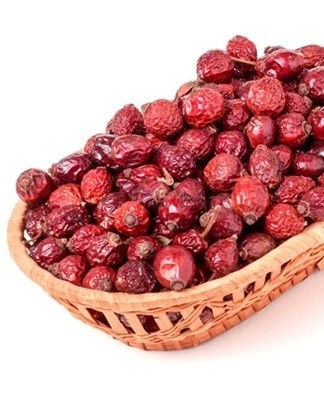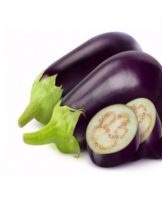How to properly store rose hips at home, when and where
The harvest time is short, so there is a desire to prolong the pleasure of consuming healthy berries. If you know how to properly store rose hips, then it is easy to provide you with vitamin products for the whole season. There are different options: air drying, drying or oven drying, freezing. The preferred method is selected after considering the pros and cons of each method.
Collection rules
Different types of rose hips do not ripen at the same time: the earliest - at the end of August, the latest - in October. They collect the fruits with their hands in thick gloves to protect them from the sharp thorns on the branches of the bush. Placed in baskets, plastic trays in a thin layer to prevent crushing and deformation. Berries are harvested in dry, sunny weather; in the rain, the vitamin content is lower. Moisture increases the risk of rotting, fungus and damage to vitamin raw materials. It is recommended to collect rose hips, other medicinal and food plants away from busy roads and industrial enterprises.
Attention! Berries for drying are harvested when fully ripe, when they easily detach from the stem.
Opinions differ as to whether it is worth waiting for the first frost to remove the crop from the bushes. According to some studies, the vitamin C content of fruits is higher once the air temperature has dropped to 0°C. In other tests, it was proven that there are more bioactive substances before freezing.
How to choose the right berries
Strictly speaking, the true fruits of rose hips - nuts - are found under the juicy skin. The brightly colored "berry" is formed as a result of the accretion of the lower parts of the petals and sepals. Dry yellowish wild rose nuts are called seeds in everyday life. Maturity is determined by the color and taste of the fruits characteristic of each species. The bright red-orange berries contain more carotenes (provitamin A). The pulp is sweet and sour, pleasant to the taste. Acidity is determined by the content of vitamin C (ascorbic acid). Fruits are also rich in vitamins B1, B2, PP, K, flavonoids.
Important! "Champions" of vitamin C content - prickly rose and May rose - about 1250 milligrams per 100 g of berries.
The less nutrient-dense rosehip is easily recognized by its thick green shoots, blushing on one side. The flowers of this species are light pink, odorless. The fruits are smooth, bright orange, up to 2.5 cm long.

Drying
The berries can be dried whole or grated. Remove the remains of the calyx and peduncle, if this was not done during collection.
In-vivo
The fruits are laid out on trays, dishes, baking sheets (the bottom is covered with paper).Small berries are completely dried. The seeds inside are also rich in vitamins, contain omega-3 and omega-6 fatty acids.
How to prepare a large rosehip:
- cut the berries lengthwise into two halves;
- clean the seeds and hairs with a teaspoon;
- quickly rinse the halves of the berries with water.
Attention! Rosehip seeds are densely covered in fine hairs with tiny, itchy teeth.
Whole or peeled berries are dried in a warm place in the open air at temperatures up to 40 ° C. Well-ventilated spaces are ideal: veranda, balcony or terrace. In vivo drying saves more vitamins.

In the oven or in the microwave
The dog rose after harvest is examined and sorted. Discard damaged and rotten berries. Further processing is the same as before drying under natural conditions. The process at temperatures above 40°C is faster than in the open air.
How to dry in the oven:
- Spread the fruit on a baking sheet, spreading it out in a single layer.
- Preheat the oven to 45-50°С.
- Place a baking sheet with the rose hips inside.
- Leave the door ajar to allow steam to escape.
- Shake the baking sheet regularly.
- Heat about 8 hours at 45-60°C.
- Remove the raw material after complete drying.
- Let cool to room temperature.
The microwave is not suitable for drying berries, fruits and vegetables. One reason is that in a microwave oven, dehydration occurs quickly, but primarily from the outer surface. Moisture is retained inside the fruit, which will cause rot.
In a special electric dryer
The rosehips, before being placed in a dehydrator, are stripped of the sepals and peduncles.Drying at 45°C will take 9-12 hours, while more nutrients will be retained. If you "force" the heating, first of all ascorbic acid is destroyed. Properly dried berries retain their natural color, easily break by hand, but do not crumble when squeezed.

Storage rules and periods
Fresh fruits can be stored after harvesting in the refrigerator for about three days, dried or frozen - for at least a year.
Dried
After complete drying, the berries are laid out in clean, odorless containers (glass or plastic), tightly closed with lids. The maximum shelf life of dried rose hips is about 1.5 years. During this time, it is necessary to try to use raw materials, otherwise it will lose vitamins and carotenes.
You can store the berries in canvas bags or paper bags, which is generally recommended for herbal medicines. However, rose hips may wet or absorb odors from the room where they will be stored. It has been tested in practice that dried berries in small plastic bags do not change color or deteriorate.
In the freezer
Quick freezing and storage at a temperature of -18 ... -24 ° C is the best option in the absence of time and conditions for drying fruits. The raw materials are processed in the same way as before being sent to the kiln. Place on freezer tray in a single layer. After 2-4 hours, the hardened berries are placed in plastic containers or wide-necked milk bottles. Cap containers tightly.
With rapid cooling, up to 90% of the nutrients are retained (compared to fresh fruit). Such a rosehip is brewed without defrosting.For comparison: during drying, the vitamin content is reduced by 30 to 40%.

Infusion
The best way to prepare a drink is to brew raw materials in a thermos. Take about 40 medium-sized berries for 500 ml of boiling water. You can leave the infusion in a thermos overnight and drink a delicious invigorating drink the next day. The prepared solution is stored in a tightly closed container for no more than 2 days in the refrigerator.
Additional tips and tricks
You can dry the rose hips on a heating battery. Berries are spread on paper, put on a heater. Turn regularly, discard blackened or whitish, with a touch of mold. The drying time of rosehip depends on the size, temperature and humidity. This may take several weeks.
Ripe, but not frozen, rose hips are easier to remove from the seeds, leaving only a juicy bark. This raw material is dried and ground into a powder. Store as dried rose hips. Fresh peeled berries are used to make juice, jam, as a filling for baking.



